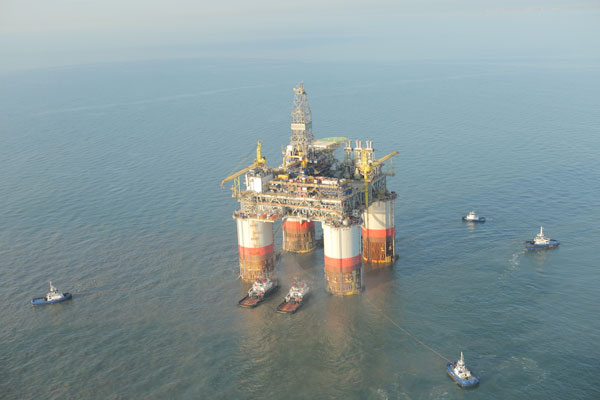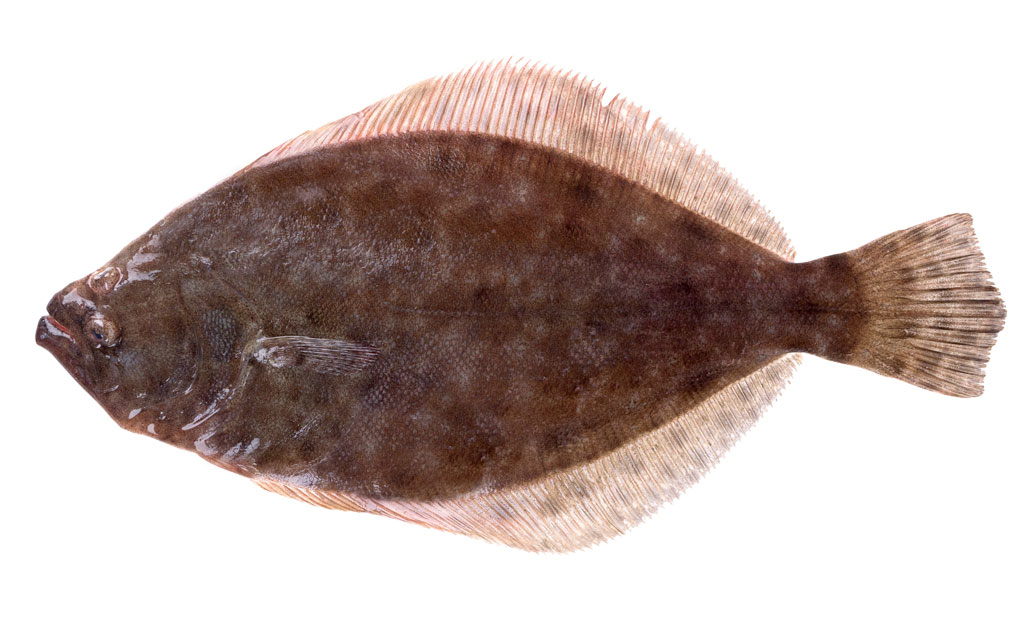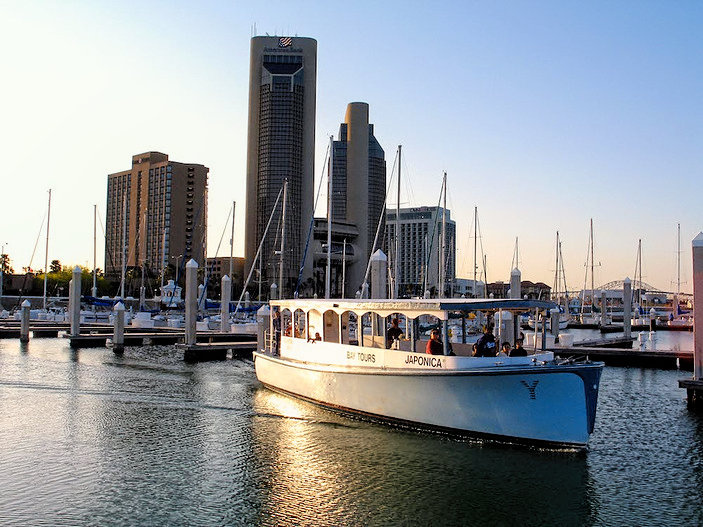
Big Foot moves slowly with the help of tugboats. It took three months to travel from South Korea to Ingleside, Texas. It will take eight to 10 days before it goes back to pumping oil some 225 miles south of New Orleans in the Gulf of Mexico. Courtesy photo
Big Foot drew a big crowd as Signet tugboats moved it from its Ingleside port through Port Aransas into the Gulf of Mexico. An offshore tension-leg oil and gas platform, Big Foot is bound for mile-deep waters 225 miles south of New Orleans. From there, it is expected to return to its job of producing up to 75,000 barrels of oil and 25 million cubic-feet of natural gas per day.
This is not Big Foot’s first time in and out of the Corpus Christi Ship Channel. It first left Kiewitt Offshore Services in March 2015 after two years at the Ingleside company. It went to work in the world’s eighth-largest oil field in the Gulf of Mexico before it came back to the oil rigger company for more work.
Big Foot was built in South Korea. It took three months to travel from there to Kiewitt Offshore Services, where water production and water-injection systems were installed.
Big Foot is about as tall as a 30-story building and designed to locate and drill oil and gas at some of the deepest levels possible with today’s technology. Each deck is the size of a football field. More than 16 miles of pipes were used to assemble the legs that stabilize it in mile-deep water. It can house up to 200 people at a time.
The trip back to its anchor position will take eight to 10 days.
The rig is partially owned by Chevron USA Inc., which has a 60 percent working interest. Other owners are Statoil Gulf of Mexico LLC (27.5 percent) and Marubeni Oil and Gas LLC (12.5 percent) and





